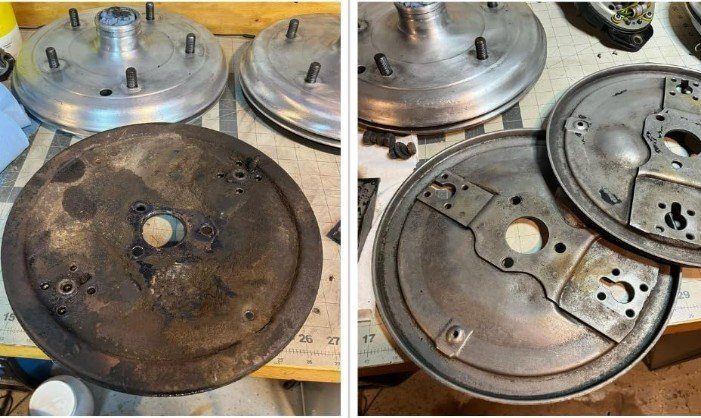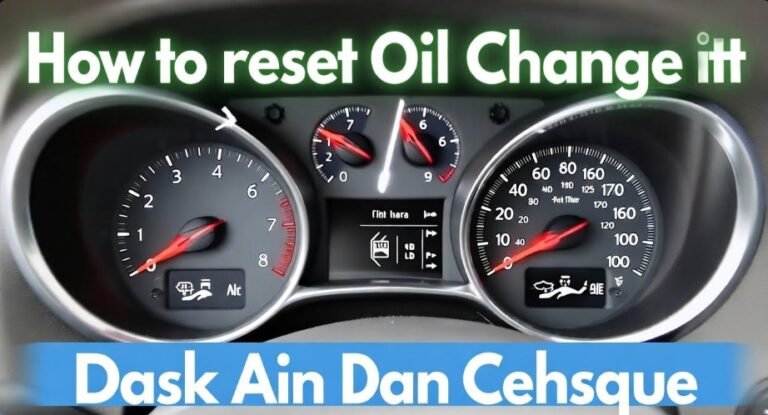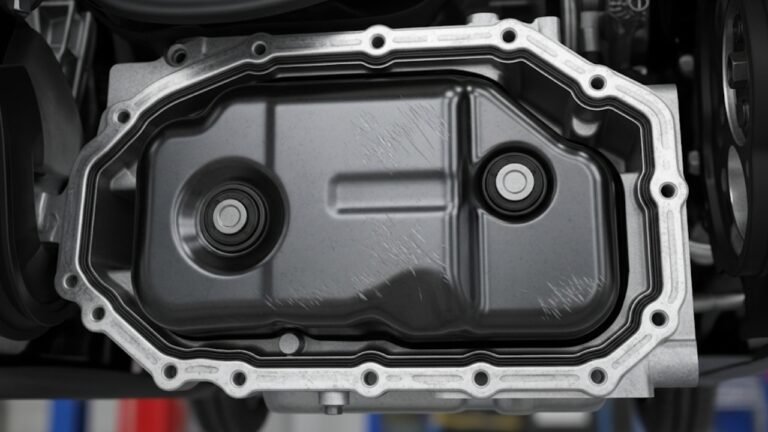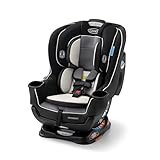Bike Disc Brake Pads Price: Find Yours

Bike Disc Brake Pads Price: Find Yours with Confidence.
Key Takeaways:
Compare bike disc brake pads price across types.
Identify material differences impacting cost.
Factor in brand reputation for value.
Consider riding conditions for pad longevity.
* Discover where to buy for best deals.
Keeping your bicycle’s disc brakes in top condition is crucial for safety and performance. When it comes to bike disc brake pads price, understanding the factors that influence cost can save you money and ensure you get the right product for your needs. Worn-out brake pads can lead to reduced stopping power and potential damage to your rotors, making timely replacement a smart investment. This guide will help you navigate the world of bike disc brake pads, from understanding different types to finally finding the best price for yours. Let’s get your ride stopping as powerfully as the day it was new.
Understanding Bike Disc Brake Pads: Types and Their Price Points
The world of bicycle disc brake pads can seem complex at first glance. Different materials offer varied performance characteristics, and these differences directly affect the bike disc brake pads price. Knowing these distinctions will empower you to make an informed decision, balancing cost with your riding style and demands.
Organic (Resin) Brake Pads
Organic, or resin, brake pads are a popular choice for many cyclists due to their affordability and excellent stopping power in dry conditions. They are made from a composite of softer materials, including friction modifiers and binders.
Pros of Organic Pads:
- Lower bike disc brake pads price.
- Quieter operation.
- Good initial bite and modulation.
- Kind to rotors, extending their lifespan.
Cons of Organic Pads:
- Tend to wear out faster, especially in wet or muddy conditions.
- Can overheat and fade under prolonged, heavy braking (e.g., long descents).
- Performance can degrade significantly in wet weather.
The bike disc brake pads price for organic options typically ranges from $15 to $30 per pair. This makes them an attractive option for casual riders, commuters, and those who prioritize quiet performance and rotor longevity over extreme durability in harsh conditions.
Metallic (Sintered) Brake Pads
Metallic, or sintered, brake pads are constructed from a blend of metal particles, such as steel, copper, and iron, bonded together under heat and pressure. This construction makes them significantly more durable and resistant to heat than organic pads.
Pros of Metallic Pads:
- Excellent durability and longevity.
- Consistent performance in wet and muddy conditions.
- Resistant to overheating and brake fade.
- Strong stopping power, especially under demanding use.
Cons of Metallic Pads:
- Higher bike disc brake pads price.
- Can be noisy, especially when wet.
- May wear rotors faster due to their harder composition.
- Require a longer bedding-in period for optimal performance.
Because of their superior durability and performance in adverse conditions, the bike disc brake pads price for metallic options typically falls between $25 and $50 per pair. These are ideal for mountain bikers, downhill riders, cyclocross racers, and anyone who frequently rides in challenging weather or demands maximum stopping power.
Semi-Metallic Brake Pads
Semi-metallic pads offer a compromise between organic and metallic options. They combine organic friction materials with a smaller percentage of metallic particles. This blend aims to provide a balance of braking performance, durability, and heat resistance.
Pros of Semi-Metallic Pads:
- Better durability than organic pads.
- Improved heat resistance compared to organic pads.
- Quieter than metallic pads.
- Good all-around performance for various conditions.
Cons of Semi-Metallic Pads:
- Higher bike disc brake pads price than organic.
- Can still wear rotors slightly faster than organic.
- May not offer the extreme heat resistance of full metallic pads.
The bike disc brake pads price for semi-metallic pads generally ranges from $20 to $40 per pair. They are a solid choice for riders who want a step up in performance and durability from organic pads without the potential noise and rotor wear associated with full metallic pads.
Factors Influencing Bike Disc Brake Pads Price
Beyond the material composition, several other factors contribute to the final bike disc brake pads price you’ll encounter. Understanding these can help you spot value and avoid overpaying.
Brand Reputation and Quality
Established brands often command higher prices due to their reputation for quality, consistency, and research and development. Brands like Shimano, SRAM, Hayes, TRP, and Jagwire are well-known for producing reliable brake pads. While generic or lesser-known brands might offer a lower bike disc brake pads price, they may not always match the performance or longevity of premium options.
Compatibility and Specific Models
Disc brake systems are not entirely universal. Brake pads come in specific shapes and sizes designed to fit particular brake calipers. For example, Shimano offers various pad shapes (e.g., B01S, K02S, F01A), SRAM has its own standard, and other brands have their unique designs. Finding the correct compatible pad is essential. Sometimes, pads for very specific or high-end brake models can be more expensive due to proprietary designs or lower production volumes. Always verify compatibility before purchasing to avoid costly mistakes.
Rotor Type Compatibility
Some brake pads are designed to work best with specific rotor types or materials. For instance, harder metallic pads might be recommended for use with more robust, thicker rotors, while softer organic pads are often paired with lighter, thinner rotors. While this doesn’t always directly impact the initial bike disc brake pads price, it can influence the overall system cost and longevity.
Availability and Retailer Markup
Like any product, the bike disc brake pads price can vary significantly between retailers. Local bike shops might have higher overheads, leading to slightly higher prices compared to large online retailers. However, local shops offer valuable expertise and immediate availability. Online stores often have competitive pricing due to lower overheads and high sales volumes.
Estimating Your Bike Disc Brake Pads Price: A Comparison Table
To give you a clearer picture, here’s a table comparing the typical bike disc brake pads price ranges for common types:
| Brake Pad Type | Typical Price per Pair (USD) | Best For | Key Trade-offs |
|---|---|---|---|
| Organic (Resin) | $15 – $30 | Casual riding, commuting, dry conditions | Shorter lifespan, reduced wet performance |
| Semi-Metallic | $20 – $40 | All-around use, varied conditions | Moderate rotor wear, good balance |
| Metallic (Sintered) | $25 – $50 | Mountain biking, downhill, wet/muddy conditions | Noisier, faster rotor wear possible |
| High-Performance/Aftermarket | $30 – $60+ | Racing, extreme conditions, specific demands | Specialized materials, potentially higher cost |
This table provides a general guideline. Be sure to check current pricing from various retailers for the most accurate bike disc brake pads price information.
Where to Find the Best Bike Disc Brake Pads Price
Securing the best bike disc brake pads price often involves a combination of knowing where to look and when to buy.
Local Bike Shops (LBS)
Your local bike shop is an excellent resource for advice and immediate replacement. While the bike disc brake pads price might be slightly higher, you benefit from expert fitting and professional installation if needed. They often carry reputable brands and can help you select the correct pads for your bike.
Online Retailers
Major online cycling retailers and general e-commerce platforms offer a vast selection and competitive pricing. Websites like Jenson USA, Competitive Cyclist, Chain Reaction Cycles, Amazon, and eBay are great places to compare bike disc brake pads price.
Tips for Online Shopping:
- Compare Prices: Don’t settle for the first price you see. Use price comparison tools or check multiple sites.
- Read Reviews: User reviews can provide valuable insights into the actual performance and durability of a specific pad.
- Check Shipping Costs: Factor in shipping fees, as they can significantly impact the overall cost.
- Look for Sales: Keep an eye out for seasonal sales, holiday promotions, and clearance events.
Direct from Manufacturer Websites
Some brake manufacturers, like Shimano or SRAM, sell their replacement parts directly through their websites or authorized dealers. This ensures you are getting genuine parts, but prices might not always be the lowest compared to large online retailers.
DIY: Replacing Your Bike Disc Brake Pads
Replacing your own brake pads is a straightforward process that can save you money on labor costs. Before you start, ensure you have the correct replacement pads and a basic set of bicycle tools.
Tools You’ll Need:
- New compatible brake pads
- Torx wrench (often T10 or T25, depending on your brake caliper)
- Hex wrench set (for potentially removing the wheel or caliper)
- Brake pad spreader or a clean, flat tool (like a tire lever, carefully used)
- Rubbing alcohol and a clean rag (for cleaning rotors)
- Gloves (to avoid contaminating the new pads with oil from your hands)
Step-by-Step Guide to Replacement:
- Ensure Safety First: Park your bike on a stable surface. If possible, use a bike stand.
- Remove the Wheel: Depending on your bike and brake setup, you might need to remove the wheel to access the brake caliper and pads.
- Access the Brake Pads: Locate the retaining pin or screw holding the brake pads in place. Some systems have a small pin with a clip, while others use a screw. Carefully remove this retaining mechanism.
- Remove Old Pads: Gently slide or pull the old brake pads out of the caliper. If they are stuck, you may need to carefully lever them out.
- Inspect and Clean Rotors: While the pads are out, inspect your brake rotors for any damage or excessive wear. Clean them thoroughly with rubbing alcohol and a clean rag to remove any dirt or grime that could contaminate the new pads.
- Compress the Caliper Pistons: Before inserting new, thicker pads, you’ll need to push the caliper pistons back into their housings. Use a brake pad spreader or a clean, flat tool. Be gentle and push them back evenly. If the pistons are difficult to retract, you might need to slightly open the bleed port of your brake system (this is a more advanced step and requires caution or professional help if you’re unsure).
- Install New Pads: Insert the new brake pads into the caliper, ensuring they are oriented correctly according to your brake manufacturer’s instructions.
- Reinstall Retaining Mechanism: Secure the new pads with the original retaining pin or screw.
- Reinstall the Wheel: If removed, put the wheel back on the bike.
- Bed-in Your New Pads: This is a crucial step for optimal performance. Find a safe, clear area with a gentle slope. Ride downhill slowly, applying the brakes intermittently and firmly but without locking them up. Repeat this process 10-20 times. This process transfers a thin layer of pad material to the rotor, ensuring consistent braking power. For a more detailed explanation of bedding-in, consult your brake manufacturer’s guide or resources like Park Tool’s guide on rotor cleaning.
Pro Tip: Always avoid touching the surface of your new brake pads or rotors with your bare hands. Skin oils can contaminate the surfaces and lead to reduced braking performance and noise.
Maintaining Your Bike Disc Brake System for Longevity
Proper maintenance can extend the life of your brake pads and rotors, ultimately saving you money in the long run.
Regular Cleaning
Keep your rotors clean from dirt, mud, and oil. A quick wipe-down with a specialized rotor cleaner or rubbing alcohol after muddy rides can prevent contamination and wear.
Checking for Wear
Brake pads wear down over time. Most pads have a minimum thickness indicator. If the pad material is worn down to less than 1mm (about the thickness of two credit cards), it’s time for a replacement. Visually inspect them often.
Avoiding Contamination
Be careful not to get any lubricants, chain oil, or degreasers on your rotors or pads. If contamination occurs, it can significantly impair braking performance and may require replacing the pads and cleaning/resurfacing the rotors.
Proper Braking Technique
Use your brakes smoothly and progressively. Avoid dragging your brakes constantly, especially on long descents, as this generates excessive heat and wears down pads faster. Learn to modulate your braking for optimal control and efficiency.
FAQ: Your Bike Disc Brake Pads Price Questions Answered
Here are answers to some common questions beginners have about bike disc brake pads price and maintenance.
Q1: How do I know which brake pads my bike needs?
You’ll need to identify the make and model of your brake calipers. Look for brand names and model numbers on the caliper body. Then, search online or consult your local bike shop with this information to find compatible pad shapes. Sometimes, the original pads will have a model number on the back.
Q2: How often should I replace my bike disc brake pads?
This depends heavily on your riding style, terrain, weather conditions, and the type of pads you use. Typically, organic pads might last 500-1000 miles, while metallic pads can last 1,000-3,000 miles or more. Visual inspection for wear is the most reliable method.
Q3: Can I mix and match brake pad brands?
While you can sometimes use pads from one brand that are designed to be compatible with another brand’s calipers (e.g., aftermarket pads for Shimano calipers), it’s generally best to stick with pads recommended by your brake manufacturer or reputable aftermarket brands known for compatibility. Always verify compatibility to ensure safe and effective braking.
Q4: What does “bedding-in” brake pads mean?
Bedding-in is a process to properly seat new brake pads against the rotor. It involves a series of controlled stops that transfer a thin, even layer of pad material to the rotor surface. This creates optimal friction for maximum stopping power and prevents glazing and uneven wear.
Q5: Are expensive brake pads worth the extra cost?
Often, yes. Higher-priced pads usually incorporate better materials, offering improved performance, durability, and heat resistance. For demanding riding like mountain biking or racing, the investment in quality pads can significantly enhance safety and control. For casual commuting, a more budget-friendly option might suffice.
Q6: How do I clean contaminated brake pads?
Unfortunately, once contaminated with oil or grease, it’s very difficult to fully clean brake pads. In many cases, it’s best to replace them to ensure reliable braking performance. You can try cleaning the rotors with isopropyl alcohol, but the pads themselves are often a lost cause.
Conclusion
Navigating the bike disc brake pads price landscape is about more than just finding the cheapest option. It’s about understanding the materials, brands, and factors that contribute to cost, and then matching those to your specific cycling needs and budget. Whether you opt for the affordability of organic pads for your daily commute or the robust performance of metallic pads for your off-road adventures, knowing how to identify, purchase, and even replace them yourself puts you in control of your bike’s performance and safety. By following the guidance in this article, you can confidently find the right bike disc brake pads at a price that makes sense for you, ensuring you can stop on a dime every time you hit the road or trail.






